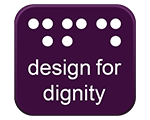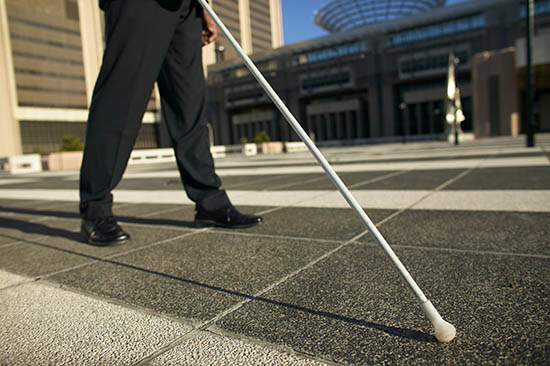Design For Dignity
Retail Guidelines




Disability, for the purposes of this Guideline, is an experience where people with sensory, cognitive, physical or other impairments experience unintended barriers when engaging with our projects or designs.*The UN Convention on the Rights of Persons with Disability defines disability in the following way: “Persons with disabilities include those who have long term physical, mental, intellectual or sensory impairments which, in interaction with various barriers, may hinder their full and effective participation in society on an equal basis with others”.
There are of course many definitions of disability.
In Australia in 2015 the Australian Bureau of Statistics (ABS) estimated there were 4.1 million people living in households, or 17.6% of the population, in Australia who experience disability. This is around 13% of everyone under 65 and about half of everyone over the age of 65.
The number of people experiencing disability in later life is expected to increase as the baby-boomer generation ages and the prevalence of chronic health conditions such as diabetes, cardiovascular and mental illnesses increases.
The spectrum of disability is therefore broader than the stereotypical images of people in wheelchairs, intellectual disability, deafness and blindness. The graph below*Australian Bureau of Statistics, Survey of Disability, Ageing and Carers (2015) shows how the probability of disability increases with age, from an 8% chance at age 25 to 53% chance at age 75:
“A typical misguided viewpoint is that someone is either disabled or fully able, yet a wide spectrum of capabilities is clearly apparent within any population. An understanding of quantitative population statistics can also inform design decisions.”*Inclusive Design Toolkit http://www.inclusivedesigntoolkit.com/betterdesign2/
Viewed September 2016
Some people with disability use aids that assist in their daily lives. ABS data shows that only 18% of people with disability use mobility aids and 27% of people with disability use some form of communication aid.
These could be very familiar devices like a mobility scooter, wheelchair or walking frame, or they might be less apparent like a hearing aid, a smart phone to assist communication by typing messages, or a sonar cane that helps someone know when there are barriers in close proximity.
These factors have significant implications for how we design and build future shopping centres and retail outlets, as well as the connecting transport and service infrastructure.
Integrating accessibility and inclusion principles at the early stages of design should therefore be an essential step, shifting away from solely compliance-driven approaches and the often, more expensive retro-fitting solutions implemented as an afterthought, during later stages of development.
“Regardless of the nature of the disability, retail design features have the power to support individuals' desire to feel independent and competent, or to disable them, making them feel disempowered and incapable. Further, inclusive design sends positive messages to people with disabilities, messages that tell them ‘you are important’, ‘we want you here’ and ‘welcome’.”*Yu, H., Tullio-Pow, S., Akhtar, A., March, 2015, Retail design and the visually impaired: A needs assessment, Journal of Retailing and Consumer Services, p122

Having more ‘universal’ or ‘inclusive’ design it also makes good business sense to attract as many people as possible to accessible developments. Thriving people places reinforce stronger rental income streams and asset values, and an overall competitive advantage for the developer and asset owner.
Goss (2003)*Goss, S, 2003, Putting the Disability Discrimination Act into perspective, Journal of Retail & Leisure Property, p126 in a study on UK pharmacy chain, Boots, notes that “Potential property purchasers need to be aware of this, and could demand that a property is not considered for purchase before a fully accredited DDA compliance audit has been undertaken and all remedial works identified or costed.”
An access audit undertaken from a member of the Association of Consultants in Access Australia could help reduce this risk under the Disability Discrimination Act 1992.